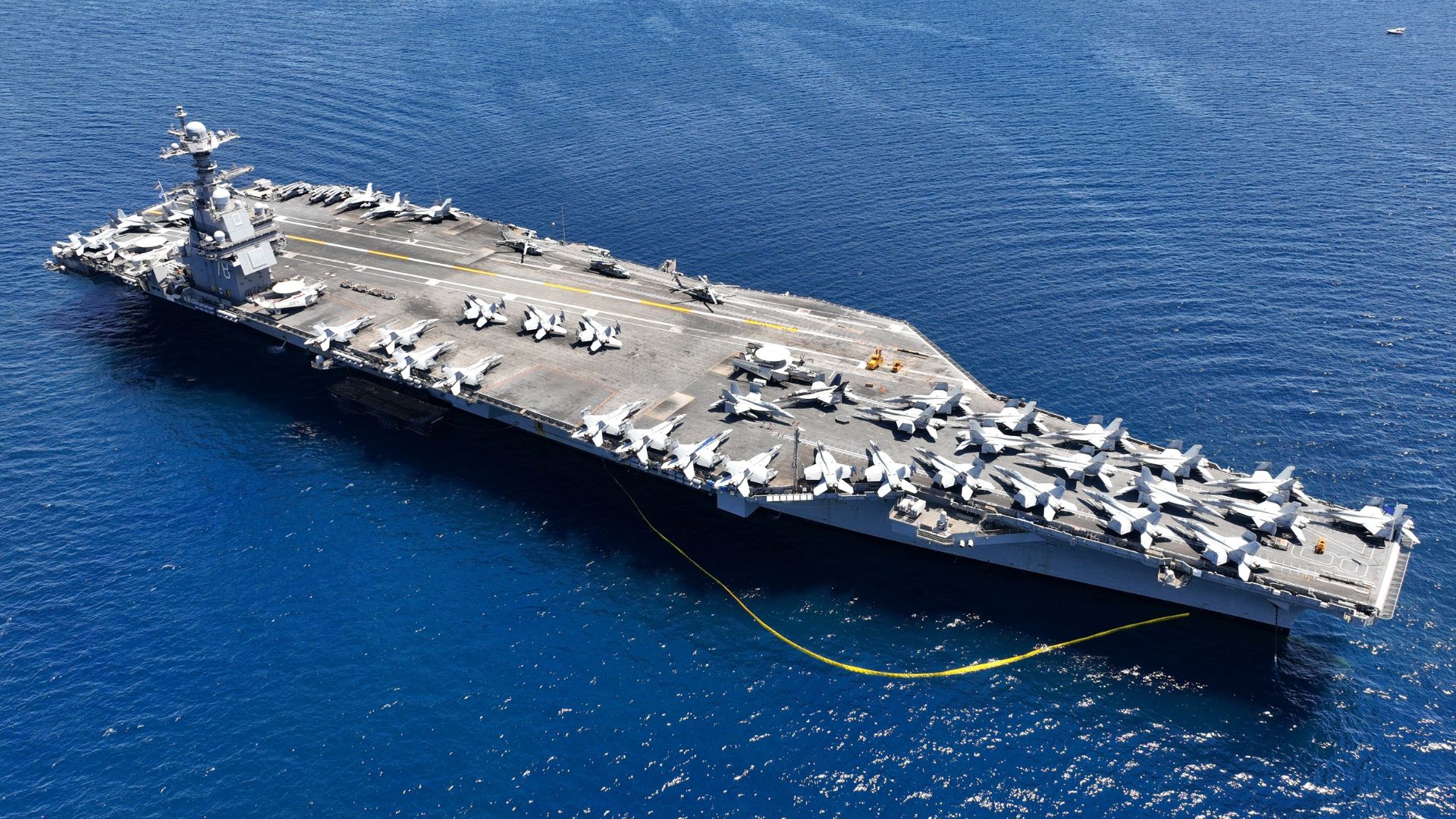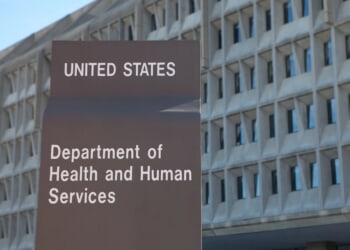
The United States Navy is preparing to deploy its largest and most advanced aircraft carrier, the USS Gerald R. Ford, to the Mediterranean Sea, according to a report released Wednesday.
The deployment comes as regional instability escalates in the Middle East, particularly with the growing conflict between Israel and Iran.
The Navy’s newest aircraft carrier, USS Gerald R. Ford (CVN-78), and its strike group will deploy to Europe next week, putting it in close proximity to the current Iran-Israel conflict.
Three US carriers will now be operating in the area. pic.twitter.com/t3F0t2KXB7
— OSINTtechnical (@Osinttechnical) June 18, 2025
Trump’s Sovereign Wealth Fund: What Could It Mean For Your Money?
CNN’s senior national security correspondent Zachary Cohen reported that the USS Gerald R. Ford, a 1,100-foot nuclear-powered carrier and the Navy’s newest flagship, is expected to arrive in European waters as early as next week.
Once deployed, it will become the third U.S. aircraft carrier group operating in the region.
This Could Be the Most Important Video Gun Owners Watch All Year
Although the Ford’s deployment had been scheduled in advance, the timing of its arrival now coincides with a broader U.S. military posture shift in response to tensions in the Middle East.
The $13 billion vessel will likely operate in the Mediterranean Sea, reinforcing U.S. naval presence and signaling an elevated readiness level amid the continued exchange of airstrikes between Israeli and Iranian forces.
The Ford will join the USS Carl Vinson, currently operating in the Persian Gulf, and the USS Nimitz, which is en route to the region from Southeast Asia following an earlier Pentagon announcement this week.
Together, these three carrier strike groups represent a significant concentration of U.S. naval power in proximity to the ongoing Israel-Iran conflict.
The renewed U.S. presence follows comments made by President Donald Trump, who recently indicated the possibility of a U.S. military strike on Iran.
This comes in the wake of public defiance by Iran’s Supreme Leader, Ayatollah Ali Khamenei, who rejected calls for unconditional surrender in the face of mounting pressure.
Additional U.S. military assets have also been mobilized in recent days. Several U.S. Navy warships reportedly departed from the naval base in Bahrain as part of a broader surge in operations around the Arabian Peninsula.
Aerial refueling tankers have also been deployed to the region to support sustained air operations, increasing U.S. capability to project force across long distances.
The USS Gerald R. Ford is equipped with the latest electromagnetic aircraft launch system (EMALS), advanced radar systems, and a redesigned flight deck, making it the most technologically advanced aircraft carrier in the U.S. fleet.
It was commissioned in 2017 and represents the lead ship of its class, intended to replace the aging Nimitz-class carriers.
While U.S. defense officials have noted that the Ford’s movement was part of a previously scheduled deployment, the current timing places its arrival at a critical moment for regional security.
The deployment is expected to bolster deterrence capabilities, provide support for U.S. allies, and increase options for American policymakers amid volatile developments in the Middle East.
No specific date has been given for the Ford’s arrival in the Mediterranean, and the Department of Defense has not issued an official statement regarding its exact mission.
However, defense analysts view the move as consistent with the broader buildup of U.S. assets in the region as the situation between Israel and Iran continues to draw international concern.
🚨JUST IN: Trump APPROVES ATTACK PLANS against Iran🚨
The “GORILLA” is coming and the Ayatollah’s rushing into a BUNKER to hide.
The Iranians say they’re NOT SURRENDERING… they’re planning a TERROR ATTACK. pic.twitter.com/j6pKnPLfOH
— Jesse Watters (@JesseBWatters) June 19, 2025
The Biden-Harris administration had previously reduced carrier presence in the Middle East, but with President Trump now in office, the current strategic shift marks a return to a more assertive posture aimed at deterrence through visible military strength.
The deployment of the USS Ford adds to that effort.
The situation continues to evolve, and further updates are expected as U.S. forces reposition to address the growing instability across the region.
Connect with Vetted Off-Duty Cops to Instantly Fulfill Your Security Needs

![Navy’s Biggest Warship Deployed as Iran Defies Trump’s Demands [WATCH]](https://www.right2024.com/wp-content/uploads/2025/06/Navys-Biggest-Warship-Deployed-as-Iran-Defies-Trumps-Demands-WATCH-750x375.jpg)
![Former Bravo Star Charged After Violent Assault Using a Rock-Filled Sock in Tennessee Walmart [WATCH]](https://www.right2024.com/wp-content/uploads/2025/07/Former-Bravo-Star-Charged-After-Violent-Assault-Using-a-Rock-Filled-350x250.jpg)



![Man Arrested After Screaming at Senators During Big Beautiful Bill Debate [WATCH]](https://www.right2024.com/wp-content/uploads/2025/06/Man-Arrested-After-Screaming-at-Senators-During-Big-Beautiful-Bill-350x250.jpg)










